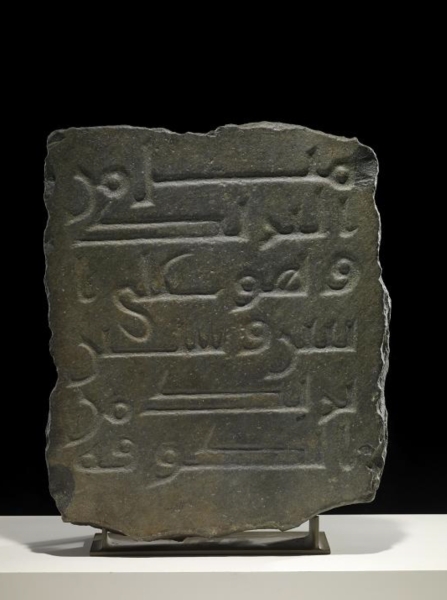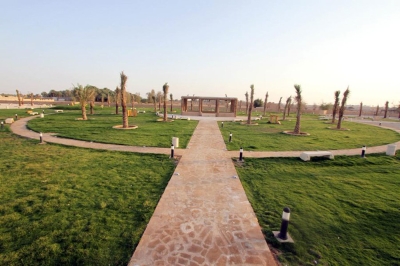
The Milly Stone Artifact is a rectangular basalt stone, with rough, unpolished edges. It was discovered along Zubaida Trail in Northern Borders Province, the Kingdom of Saudi Arabia, a historic Hajj route extending from Iraq to Makkah al-Mukarramah.
The stone bears an Arabic inscription of six lines (lacking diacritics), indicating the distance along the Hajj route from Kufa (Zubaida Trail). The inscription reads:
Al-Bareed
Meel Men
Wa Huwa Ala
Ethnain wa Setteen
Bareed Men
Al-Kufa
Bareed men al-Kufa
History of the milly stone
This milly stone dates back to the Abbasid Caliphate period during the Islamic era. It was used as a road marker to guide travelers. The stone is preserved at the Saudi National Museum in the capital, Riyadh. It was part of the archaeological discoveries resulting from the archaeological surveys and excavations carried out by the Antiquities and Museums Sector in Saudi Arabia over the past years, as part of the findings by Saudi archaeologists and scientific missions across Saudi Arabia. The stone is cataloged under the number 1356. The stone was part of a selected collection of archaeological discoveries from Saudi Arabia featured in the Saudi Archeological Masterpieces Through the Ages Exhibition. The exhibition began its journey across museums and galleries worldwide in 2010 at the Louvre Museum in Paris, France.
Significance of the milly stone
The milly stone (road sign) reflects the Muslim caliphs and rulers' efforts to enhance the Hajj routes, ensuring the comfort and guidance of pilgrims, Umrah performers, and visitors traveling to the Grand Mosque. It was used to indicate the distances between stages of the route. The old script on the stone demonstrates the advancements in the Arabic script during the early centuries of the Islamic era. The stone is fifty cm long, forty-two cm wide, and thirteen cm thick.
Related quizzes
Related articles

